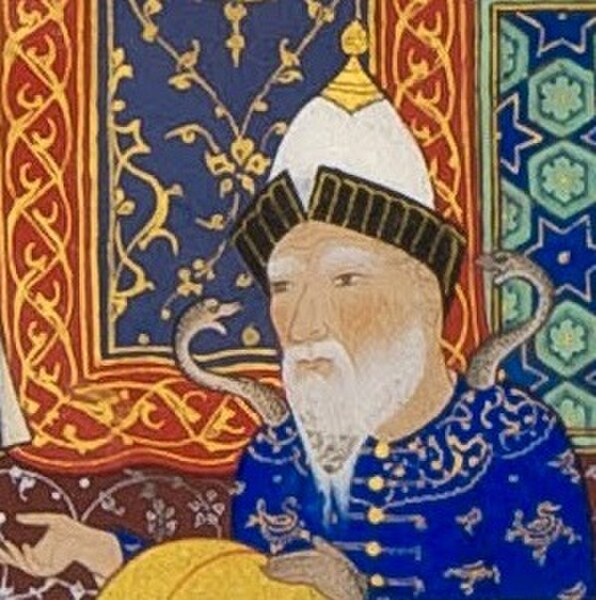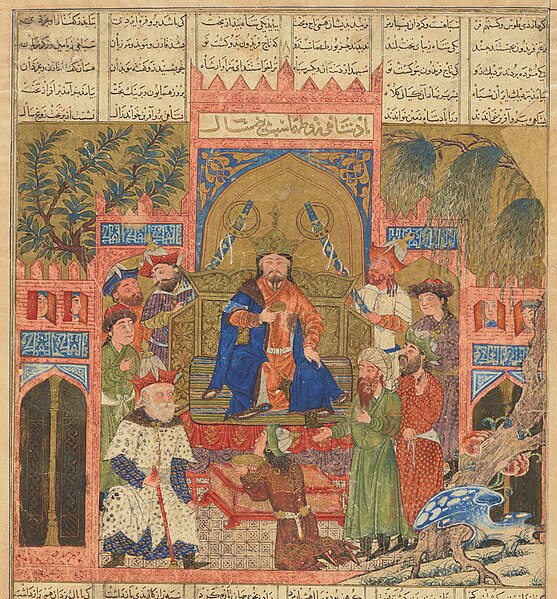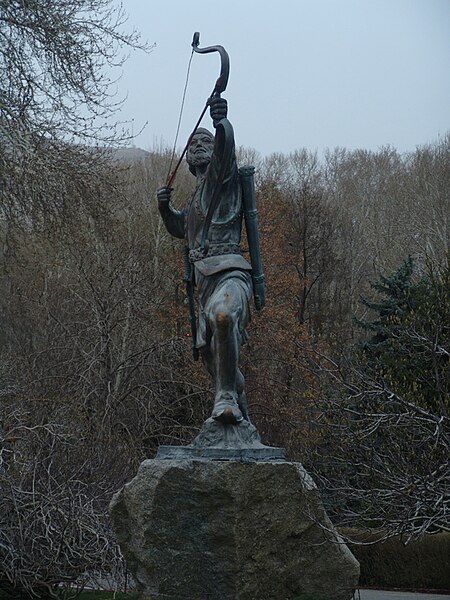The Pishdadian dynasty is a mythical line of primordial kings featured in Zoroastrian belief and Persian mythology. They are presented in legend as originally rulers of the world but whose realm was eventually limited to Ērānshahr or Greater Iran. Although there are scattered references to them in the Zoroastrian scriptures—the Avesta—and later Pahlavi literature, it is through the 11th-century Iranian national epic, the Shahnameh, that the canonical form of their legends is known. From the 9th century, Muslim writers, notably Tabari, re-told many of the Pishdadian legends in prose histories and other works. The Pishdadian kings and the stories relating to them have no basis in historical fact, however.
Image: Mir Musavvir 002 (Zahhak)
Image: Farîdûn, seated on his throne, surrounded by five courtiers
Image: Detail of Enthronement of Shah Zav Shahnama Iran Tabriz Ilkhanid period ca
Image: Garshâsp son of Zav on his throne (Shahnmaeh)
Iranian mythology, or Persian mythology in western term, is the body of the myths originally told by ancient Persians and other Iranian peoples and a genre of ancient Persian folklore. These stories concern the origin and nature of the world, the lives and activities of deities, heroes, and mythological creatures, and the origins and significance of the ancient Persians' own cult and ritual practices. Modern scholars study the myths to shed light on the religious and political institutions of not only present-day Iran but of the Persosphere, which includes regions of West Asia, Central Asia, South Asia, and Transcaucasia where the culture of Iran has had significant influence. Historically, these were regions long ruled by dynasties of various Iranian empires, that incorporated considerable aspects of Persian culture through extensive contact with them, or where sufficient Iranian peoples settled to still maintain communities who patronize their respective cultures. It roughly corresponds to the Iranian Plateau and its bordering plains.

Faramarz slaying Ahriman - a scene from the Shahnameh.
Detail of The School of Athens by Raphael, 1509, showing Zoroaster (left, with star-studded globe)
Chinvat Bridge scene on the sarcophagus of Wirkak.
Statue of Arash, Sa'dabad Complex.








